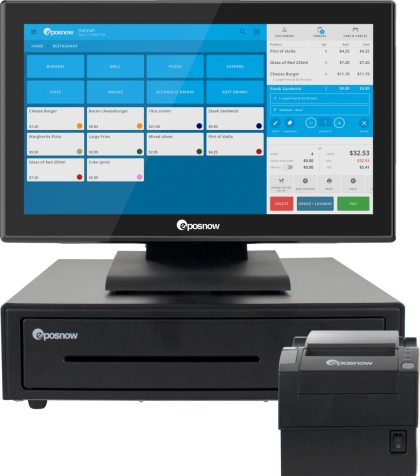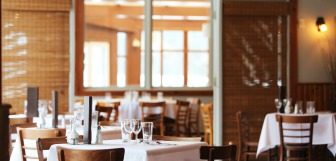Restaurant Pricing: Proven Strategies To Set Your Prices
As a restaurant owner or manager, you know that pricing your menu items is one of the most important – and difficult – decisions you have to make.
After all, if your restaurant menu prices are too high, you could lose customers to your competition. But if your menu price is too low, you won't be able to cover your costs or make a profit.
So how do you strike the right balance? We're giving you a complete guide to restaurant menu pricing, including:
-
The different types of restaurant menu pricing strategies you can use
-
Menu psychology: how to use restaurant pricing to your advantage
-
The pitfalls to avoid when setting prices
-
Tips for setting menu prices will attract customers and help you boost your bottom line.
By the end of this guide, you'll have everything you need to price your menu items like a pro!
Costs associated with opening a restaurant
So how much does it cost to open a restaurant? Before we dive into restaurant pricing, let's go over some of the other costs associated with opening a restaurant.
-
Rent or mortgage payments: This will be your biggest overhead expense and varies depending on factors like size, location etc.
-
Insurance: cost of restaurant insurance can differ based on the type of coverage you get and whether you're insuring a brick-and-mortar or food truck.
-
Permits: A restaurant licenses and permits cost will vary depending on your province or city and state but can be anywhere between $25 and $7,000 [1].
-
Labor cost for restaurant: Wages for servers, cooks, dishwashers, and other staff members.
-
Everyday expenses: expenses for a restaurant include things like paper towels, to-go boxes, and other disposable items. Essentially your restaurant prime costs.
-
Franchise fees: If you're opening a franchise restaurant, you'll need to pay initial and ongoing fees as part of your restaurant franchise costs.
-
Variables: variable costs for a restaurant are things like utilities, which can go up or down depending on the season such as gas and electric heating in the winter.
We've got some brilliant resources that go into more detail on each of these items, so feel free to check them out.
What is a pricing strategy?
A pricing strategy is a method you use to set the price of your menu items. When it comes to menu pricing, there are several different pricing strategies you can choose from. The right one for your restaurant will depend on factors like your target market, your competition, and your overall business goals.
Let's say you own a restaurant near a college campus. Your target market is likely to be price-conscious students, so you might choose a pricing strategy that offers lower prices than your competition.
On the other hand, if you're targeting a more upscale crowd, you might decide to charge higher prices than your competitors.
Types of pricing strategies
There are four main types of pricing strategies you can use when setting menu prices: cost-based pricing, value-based pricing, competition-based pricing, and demand-based pricing.
Let's take a closer look at each one:
Cost-based pricing strategies
With cost-based pricing, you set your menu prices based on the cost of making each dish plus your ideal gross profit margin.
To calculate the cost of each dish, you'll need to add up your restaurant food cost (the cost of the ingredients used and your food cost percentage), labor cost for a restaurant (wages for the kitchen and front-of-house staff), and overhead costs (rent, utilities, etc.). Once you have that, you can add your desired gross profit margin to create a menu price.
For example, let's say it costs $10 to make a dish, including food costs, labor costs, and overhead. If you want to achieve a 20% gross profit margin, you would add $2 to the total cost for a menu price of $12.
Benefits of cost-based pricing:
-
This method makes it easy to calculate menu prices and food cost percentage.
-
Cost-based pricing can help you make sure you're covering your costs and making a profit.
Drawbacks of cost-based pricing:
-
It doesn't take into account customer demand or what your competitors are charging.
-
You might have to lower your prices if customers aren't willing to pay what you're asking.

Run the restaurant you've always wanted
Our restaurant POS system has all the features you need to build the restaurant of the future.
- Reduce contact and enhance efficiency with at-table ordering
- Use customizable table plans to improve table turnover
- Sync with leading food delivery apps to reach new customers and boost revenue
- Manage inventory, easily monitor sales and margin performance
- Menu management, employee management and more
What is food cost percentage?
Your food cost percentage is the percentage of your total revenue that goes towards food costs. When pricing your menu items, you'll want to make sure your food cost percentage is in line with industry standards and your desired gross profit margin.
To calculate your food cost percentage, simply divide your total food cost by your total revenue. For example, if your total food cost is $5,000 and your total revenue is $10,000, your food cost percentage would be 50%.
Food cost percentage is a key metric for any restaurant owner or manager, as it can help track your spending and ensure you're making a profit.
There are a few different ways to reduce your food cost percentage, such as negotiating with suppliers for lower prices, reducing waste, and changing your menu mix.
Value-based pricing strategies
With value-based pricing, your restaurant menu prices are set based on what you think customers are willing to pay for each dish rather than the cost of making it.
To come up with a value-based price, you'll need to consider factors like the quality of your ingredients, the time and effort required to make each dish, and how popular it is with customers. You can also look at what other restaurants in your area charge for similar dishes.
For example, let's say you use high-quality ingredients and your dishes take longer to prepare than other restaurants. You might charge a higher price than your competitors since customers are willing to pay more for a better product.
Benefits of value-based pricing:
-
It allows you to charge what customers are willing to pay rather than the cost of making each dish.
-
It ensures that your menu prices align with your dishes' perceived value.
Drawbacks of value-based pricing:
-
It can be difficult to determine what customers are willing to pay for each dish.
-
You might need to adjust your prices frequently as customer perceptions change.
Competition-based pricing strategies
With competition-based pricing, your restaurant menu prices are based on what other restaurants in your area charge for similar dishes.
This pricing strategy can be helpful if you're unsure how to price your own dishes or if you want to ensure your prices are in line with those of your competitors. However, it's important to remember that you shouldn't blindly follow the competition – you should still consider your own cost of goods, desired gross profit margin, and value to customers when setting menu prices.
Benefits of competition-based pricing:
-
It's easy to find out what your competitors are charging.
-
It can help you price your dishes competitively.
Drawbacks of competition-based pricing:
-
You might not be able to charge as much as you want if your prices are too high compared to your competitors.
-
You might have to lower your prices if your competitors start charging less.
Demand-based pricing strategies
With demand-based pricing, you set your menu prices based on how popular a dish is with customers.
This type of pricing strategy can be helpful if you have dishes that are in high demand and you want to maximize your gross profit margin. However, it's important to be careful with demand-based pricing, as you don't want to alienate customers by charging too much for a dish.
Benefits of demand-based pricing:
-
It allows you to charge more for popular dishes, maximizing your gross profit margin.
Drawbacks of demand-based pricing:
-
Customers might be turned off by high prices, even if a dish is in high demand.
-
You'll need to constantly monitor customer demand to make sure your prices are
Menu psychology: how to use pricing to your advantage
When it comes to pricing your menu, there are a few psychological tricks you can use to encourage customers to order more – and spend more money.
One common tactic is known as "anchoring." This involves choosing one dish on your menu – typically the most expensive option – and using it as a reference point for all other prices. Customers will then perceive the other dishes as a good deal, even if they're not that cheap.
For example, let's say you have a dish on your menu that costs $25. You might want to anchor this price by listing it first, before any of the other prices. Then, when customers see the $12 entrée listed next to it, they'll perceive it as being a good deal, even though it's not actually that cheap.
Another common pricing tactic is known as "charm pricing." This involves listing prices that end in .99 or .95 rather than round numbers. The theory is that customers will perceive these prices as being lower, even though they're actually only a few cents cheaper.
For example, let's say you have a dish that costs $10. You might list the price as $9.99 rather than $10. Customers will then perceive the dish as being $9.99 – a small but significant saving.
Of course, you should always use caution when employing pricing tricks like these. You don't want to overuse them, or customers will catch on and become annoyed. But if used sparingly, menu psychology can be a powerful tool for boosting your sales and profits.
Pitfalls to avoid when setting prices
When setting prices for your menu, there are a few pitfalls you'll want to avoid. These include:
-
Not considering your costs: It's important to ensure your restaurant menu prices are high enough to cover your costs, including the cost of ingredients, labor, and overhead. If you don't do this, you'll quickly find yourself out of business.
-
Not raising your prices regularly: As your costs go up, you'll need to raise your prices to keep up. If you don't do this, you'll find yourself losing money.
-
Not testing your prices: Before settling on a particular price, it's always a good idea to test it out. Offer a dish at a lower price for a limited time and see how customers respond. If they're receptive, you can keep the lower price. If not, you can raise it back to its original price.
As you can see, there are a lot of factors to consider when setting prices for your menu. But if you take the time to do it right, you'll be rewarded with increased sales and profits.
Top tips for your restaurant menu pricing strategy
Now that you know some of the common mistakes to avoid when menu pricing, let's take a look at some tips that will help you price it effectively.
Consider your target market:
As we mentioned earlier, it's important to consider your target market regarding menu pricing.
A great way to determine your target market is to survey your existing customers. Ask them how much they're willing to spend on a meal and what type of restaurant they prefer. This information will be invaluable when in your restaurant menu pricing strategy.
You can also carry out a buyer persona exercise. This involves creating a profile of your ideal customer. Include their age, income, occupation, and anything else that would be relevant to your restaurant.
Consider your costs
As we mentioned earlier, it's important to ensure your prices are high enough to cover your costs. This includes your ideal food cost percentage, labor, and overhead.
To get an accurate picture of your costs, you'll need to track them carefully. Using a restaurant POS system can also help you track your costs. Most POS systems have built-in cost-tracking features that make it easy to see how much you're spending on ingredients, labor, and overhead.
Consider your competition:
When setting prices, it's also important to consider your competition. Take a look at what other restaurants in your area are charging for similar dishes. Customers will simply go to another restaurant if you're too high. But if you're priced too low, you might not make enough money to stay in business.
You'll need to do some research to get an accurate picture of your competition's prices. Visit their websites and take a look at their menus. You can also call their restaurants and ask for their prices.
Once you have a good idea of what your competition is charging, you'll be able to set competitive prices.
Consider your menu mix:
Your menu mix is the combination of dishes you offer at your restaurant. When setting prices, it's important to consider your menu mix. This is because some dishes are more profitable than others.
For example, dishes that are made with expensive ingredients or require a lot of labor to prepare are typically less profitable than simpler dishes. So, if you want to maximize your profits, you should price these dishes accordingly.
A POS can also help you optimize your menu mix. Most restaurant POS systems offer menu engineering features that help you see which dishes are the most profitable and also help you work out your food cost percentage. This information can be used in your menu price to maximize your profits.
Final thoughts
Pricing your menu can be a challenge. But if you follow the tips we've outlined in this article, you'll be able to price it effectively.
When considering your restaurant, menu pricing, target market, food cost percentage, competition, and menu mix are all important factors.
Doing so will help you maximize your sales and profits.
If you’re interested in hearing more about Epos Now, get in touch with our expert team below.



